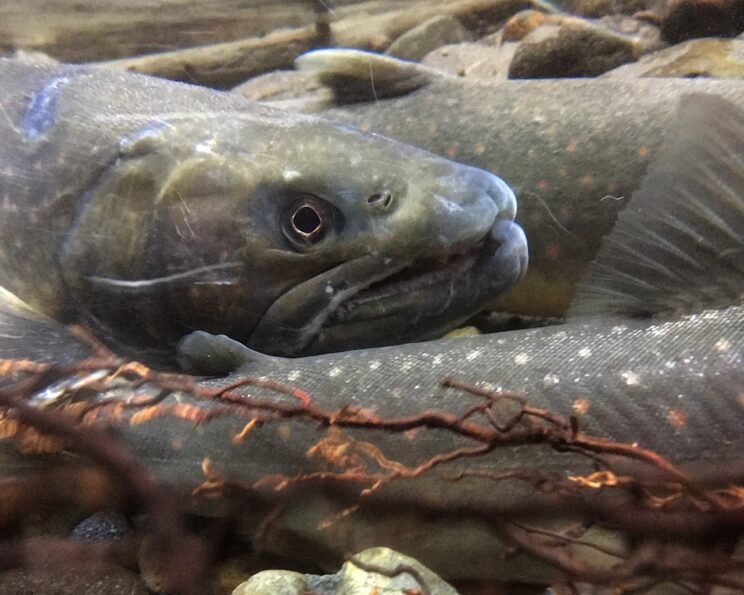
Mount Rainier is an iconic aspect of any skyline shot of Washington State, perhaps only rivalled by Seattle’s Space Needle. At over fourteen thousand feet this active volcano towers over the surrounding wilderness. With its top covered by glacial ice and its bottom blanketed by thick coniferous forests, Rainier has been impressing people as long as there have been people in the Pacific Northwest.
A perspective that has only been perceptible in the past hundred years or so has been Rainier from above. While such a viewpoint is interesting for geologists and volcanologists, it also illustrates something remarkable for those concerned with watersheds. Cascading down the severe sides of the mountain are no less than nine distinct watersheds. Rivers flow out like points of a compass. There is great similarity, but ecologically each is practically isolated from one another.
This diversity has allowed for a multi-faceted conservation plan regarding native fish species, including six salmonids, within Mount Rainier National Park.
As is the case across the country and within the National Park Service, undoing decades of deliberate and incidental fisheries mismanagement is a priority. At Rainier, protecting threatened species such as bull trout, steelhead, and chinook salmon has become a point of emphasis. To be consistent, this also means all efforts ensure that other native species, like mountain whitefish and shorthead sculpin, are given equal consideration. The fish that are in the crosshairs here are the same species that are the recipients of protection and special management elsewhere: brook trout and Yellowstone cutthroat, for example.
The conservation plan at Mount Rainier National Park includes the removal from Code of Federal Regulations stipulations such as those which restrict the harvest of nonnative species. As is the case in many pointed recovery plans across the country, anglers are being “recruited” to harvest those fish that were introduced to the park’s waters. Many of these stocked fish originally only existed in what were once fishless ponds, but practical isolation is something that nature can easily overcome.
Additional regulations include the implementation of closed sections of some streams and limited opportunities (fly fishing only) in others. These stipulations vary from stream to stream, watershed to watershed. Anglers will need to do their due diligence in researching where they can fish, how they may proceed in those waters, and if they can keep their catch. The course in one valley may be completely different than what is necessary in the next. This potential confusion was considered, and the Park Service is relying upon their communication and signage to inform conscientious visitors.
People don’t like change. Losing a favorite fishing spot or even having the signage at a familiar stretch of water change can lead to consternation. But the aim of the changes at Mount Rainier is to reverse manmade ecological problems, and to do so at little impact to those who pay for and benefit from public land. There are a lot of watersheds in the park, but there are inevitably many more traditions, stories, and treasured pools. Ensuring that the next generations get to continue enjoying that great diversity within the natural world is a worthwhile impetus for change.
The new rules go into effect in late February of 2023 after years of study and months of public review. As is the case with any initiative, time will tell how efficient and effective the updated regulations were. Regardless, in some way the native fish species of Mount Rainier National Park will be the beneficiaries of renewed stewardship efforts. Read more about fishing and conservation in the park here.
